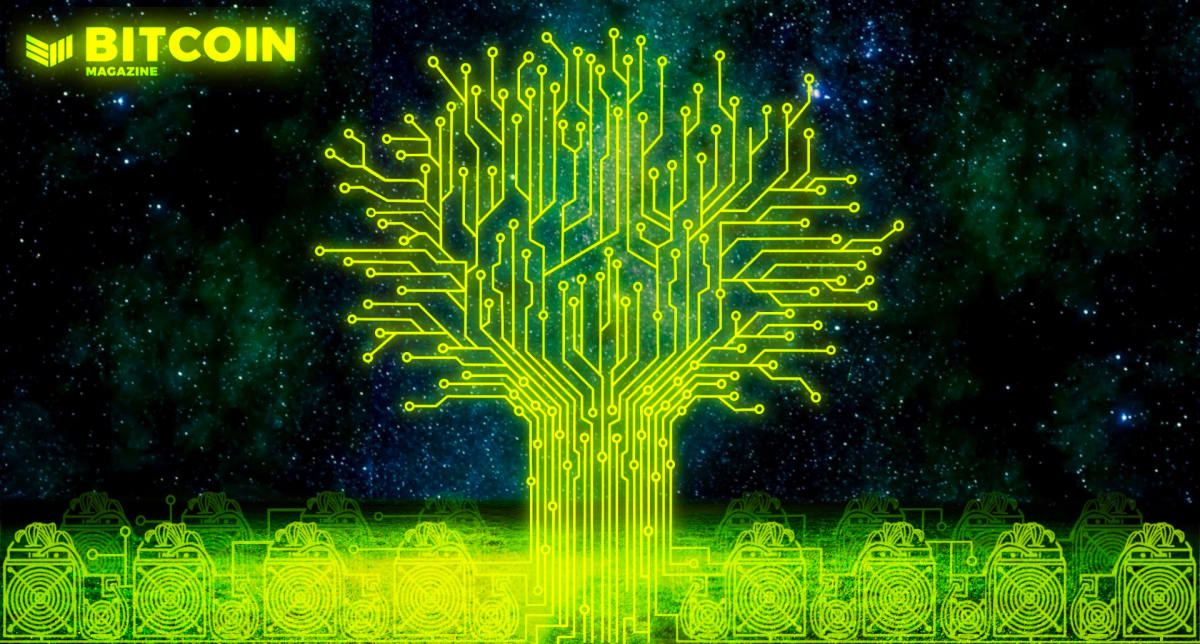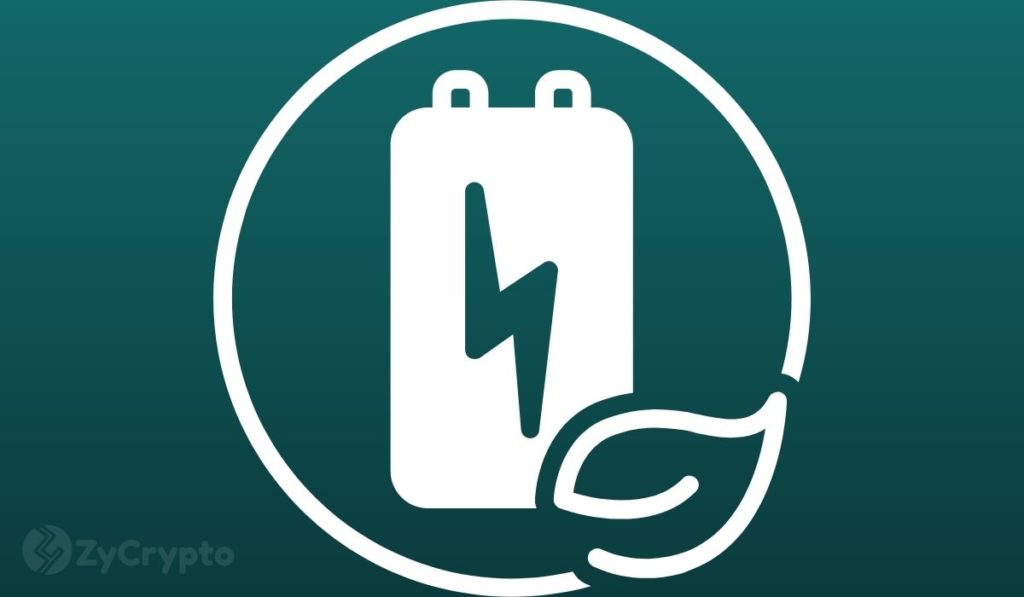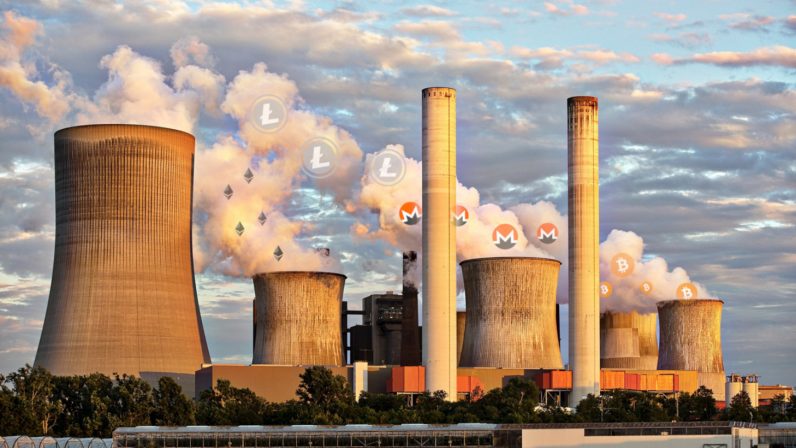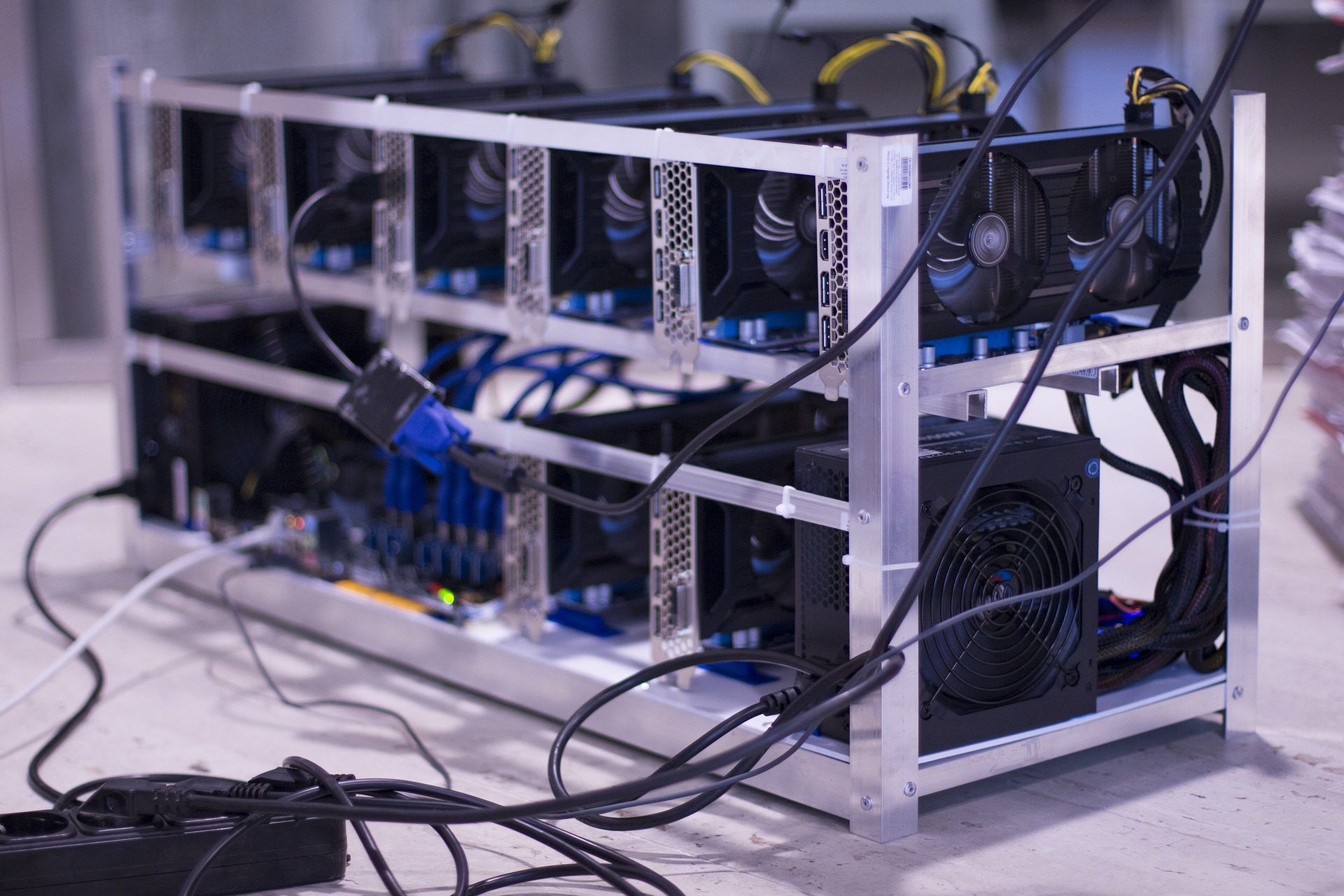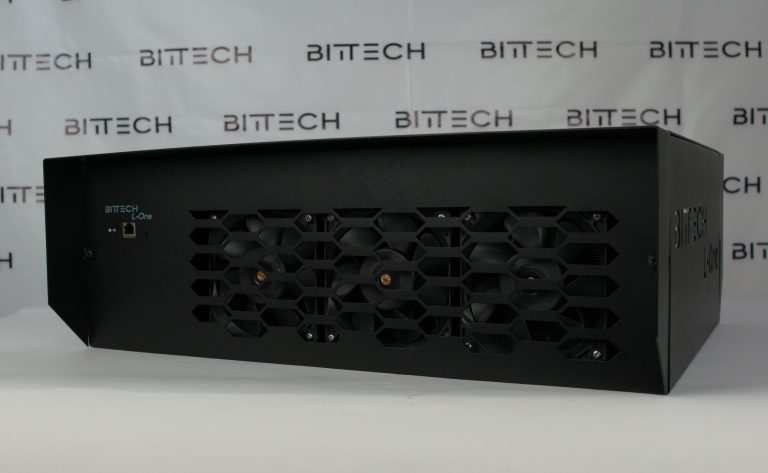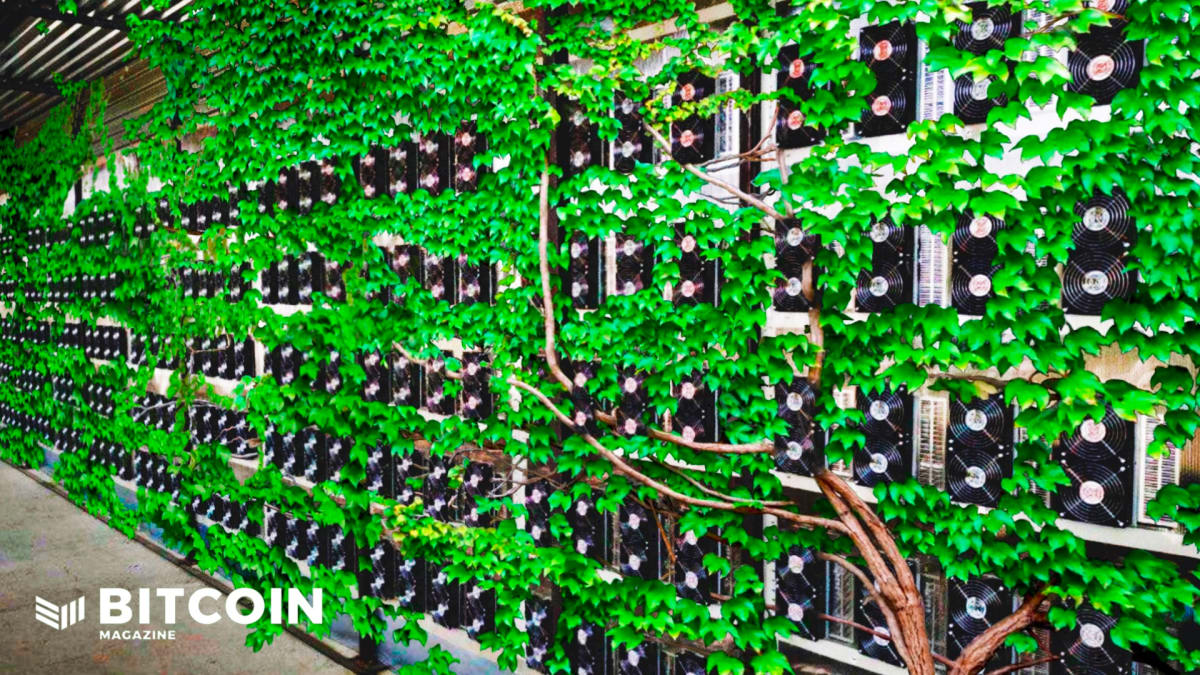
2021-9-27 21:00 |
The energy usage of bitcoin mining has been frequently misrepresented — but there's still reason to seek renewable energy sources.
What if you could substitute a renewable battery-powered motor for the internal combustion engine just twelve years after its invention? At minimum, we would not be faced with the challenge of limiting greenhouse gas emissions. For all of the benefits the internal combustion engine has brought humanity, its environmental consequences are not among them.
An equally consequential technology — Bitcoin (BTC) — in its twelfth year of existence, is being adopted at an unprecedented pace.1 The position of current Bitcoin thought leaders is that Bitcoin’s energy use “is not a problem.”2 However, despite its rapid adoption, Bitcoin still operates at the periphery for most people. As it matures, its energy use, among other things, will only receive greater scrutiny. Operating the Bitcoin network globally uses as much energy as Washington state, which amounts to less than one half of one percent of total global energy use. However, Bitcoin’s energy use can be framed in ways that could undermine its promise, as has been done many times before.3 Because of the positive impact it is positioned to provide society, bitcoin mining should involve clean energy and waste energy streams so that its progress is not unnecessarily halted. It is all the more essential because with effort, bitcoin mining can be done with clean energy sources and by relying on waste energy streams. But to facilitate a movement toward more climate-friendly bitcoin mining, more people must appreciate why bitcoin is consequential.
Why Bitcoin MattersIt is critical to understand that bitcoin is a technological innovation: as the “native currency of the internet,” bitcoin for the first time enables the transfer of value anywhere on the planet without using a third party. Over 2 billion of the world’s population is “unbanked,” meaning they cannot access the financial system that we take for granted. Bitcoin enables these people to maintain and control their hard-earned value. Imagine how many refugees throughout history would have benefitted from this capability. When the Afghan government fell, Western Union ceased offering its services there. If you were an Afghan fleeing and your wealth was in a bank, your wealth is inaccessible to you now. Bitcoin fixes this, which is just one of many ways that bitcoin is disruptive.4
Additionally, what may be bitcoin’s most important feature, is that it’s a completely deflationary medium: only 21 million bitcoin will ever exist. It is programmed (Bitcoin is software) to be the scarcest resource available in the world. No matter how much demand for bitcoin there is, the supply will increase at a fixed but diminishing rate (the amount produced by each block halves every four years), which means saving your wealth in bitcoin will be rewarded over time, as its adoption and value increases. With 40% of all the U.S. dollars that have ever existed printed in just the last 18 months, other countries are taking notice of the impact a world flooded with U.S. dollars has on their purchasing power.5 Just this year, El Salvador, which adopted the U.S. dollar in 2001, recognized Bitcoin as legal tender, and is now widely believed to be the first of many counties to do so. And for this reason, bitcoin’s ability to act as “digital gold” will benefit anybody who stores value in it, in the face of the money-printing behaviors of modern governments.
Narratives Are Persistent. It Is Critical To Control The Narrative Around BitcoinWhen some hear the word “bitcoin,” those who don’t understand the currency sometimes default to claims such as “it’s a scam,” or “it’s a Ponzi scheme,” or “it’s used by criminals.” Twelve years into its existence, the evidence is clear that it’s not a scam or a Ponzi scheme, and while criminals do use bitcoin, its use for crime as a percentage of total use is infinitesimal.6 Just ask the Salvadoreans remitting their hard-earned bitcoin back to family in El Salvador without third parties, like Western Union, skimming large percentages off of their wealth due to fees to use the service. The narrative around bitcoin globally is changing.
Especially in the U.S., bitcoin’s adoption will be driven by a younger generation acutely attuned to the environmental effects of their actions. If this generation becomes concerned about bitcoin’s environmental footprint, they could turn to less energy-consuming digital currencies or worse, push the bitcoin community to switch to proof-of-stake, and greatly diminish the utility and security of the Bitcoin network to the global community.7 For this reason, Bitcoin thought leaders must focus not on how much energy Bitcoin uses, but instead work to ensure that its energy use comes from clean energy sources. Being able to say “bitcoin is mined from clean energy sources” is far better than claiming “it’s energy use isn’t a problem.”
The narrative on Bitcoin’s energy use by those outside or on the periphery of its adoption must not be allowed to diminish its promise,8 as the narrative that its energy use is bad for the planet will not facilitate its adoption.
Bitcoin Mining Takes EnergyMining bitcoin (using a specialized computer to solve a cryptographic puzzle), like mining any other resource, requires energy. The pseudonymous inventor of bitcoin, Satoshi Nakamoto, likened mining of bitcoin to mining gold. “Gold mining is a waste but that waste is less than the utility of having gold available as a medium of exchange.”9 The same is true with bitcoin. Unlike many other resources, the power to mine bitcoin can be obtained from renewable resources and from waste streams from conventional energy sources.
Presently, in mid-September 2021, it takes $12,500 to mine one block of bitcoin, which is worth just over $312,500.10 This is a positive attribute because the effort and energy expended reflects the value of bitcoin, just as with other scarce goods. However, 90% of all the bitcoin that will ever be mined is already in existence. And very few of the almost 19 million bitcoin mined to date cost nearly this much to mine, nor used nearly as much energy. Most were mined on simple laptops, actually. Today, and going forward, it will require ever-more expensive and powerful miners.
It is estimated that it has cost approximately $28 billion to create all of the extant bitcoin and that $28 billion is now worth almost $1 trillion, and increasing in value.11 Today, it costs just over $11 million per day to mine the 900 new bitcoin placed into circulation. At a value of $50,000 per BTC, that is serious “bang for your bitcoin.” However, reference is important. The U.S. Treasury spends over $1 billion each year to maintain the U.S. currency.12 And that is just one of the approximately 190 currencies on the planet. The cost of money on a global scale also uses energy resources and those totals easily exceed the cost to mine bitcoin, even at today’s costs.
Today, the Bitcoin network uses around 140TWh of energy. The gas flared by the U.S. oil and gas industry alone can generate 150 TWh13 of electricity. The cost of running a miner is almost entirely its cost of electricity. However, unlike most electricity consumers, miners can rely on intermittent power and be located nearby to energy sources. Bitcoin already uses more energy than some countries but still makes up only 0.3% of all global energy consumption. However, it’s not the scale of energy consumed by the Bitcoin network, it is the fact that the network should not have any environmental consequences over the longer term.
How To Derive Bitcoin From Clean Energy And Waste StreamsEarlier this year, China banned bitcoin mining and set off a migration of miners around the globe seeking cheap sources of energy to run their miners. This migration will take 12-18 months to play out. During this time, the U.S. and others will compete to make their locations the most attractive for miners.
Already, bitcoin mining is concentrated amongst conglomerates. This is an opportunity for the U.S. to encourage the location of large bitcoin mining operations next to large energy opportunities. Bitcoin miners can locate themselves anywhere and are perfectly positioned to exploit stranded energy assets, feed off of waste energy, co-locate and buy operating reserves from power plants, just to name a few.
As bitcoin becomes more mainstream, there is no reason to allow bitcoin energy use and contribution to greenhouse gas emissions to be an obstacle to its advancement, because bitcoin mining is perfectly suited to rely on renewables and waste-energy streams. The opportunity before us is not just to build a bitcoin network that relies on renewables, but one that also utilizes waste streams from oil and gas production operations and even unused baseload from utility operations to add energy efficiency to the overall energy production market.
What This Means For Your BusinessAs the crypto industry matures, it is going to need more professionals who understand what it is and the challenges it faces. Some have said “not only must bitcoin mining reduce its overall energy consumption, but it must aim to ensure that the energy it does consume is from clean energy sources that limit greenhouse gas emissions.”14 The issue here is that the Bitcoin network will not use less energy in the future, it will use more — and the challenge is to make sure it uses clean energy sources. For example, changes to the tax code for bitcoin mining from renewable or waste energy sources can provide a tax benefit that mining from conventional sources does not receive.
Further, mining facilities, which will grow in size and energy consumption as bitcoin becomes more energy intensive to mine, will need to follow state and local code requirements for safety and efficiency.
Large and small-scale utilities will need assistance getting approval from regulators so that they can enter into long-term contracts with miners and demonstrate value-add for their customers by using their standby power to mine bitcoin.
Likewise, oil and gas operators will need assistance entering into contracts with bitcoin miners to use flared gas to power bitcoin miners.
This is a guest post by Miguel Suazo. Opinions expressed are entirely their own and do not necessarily reflect those of BTC, Inc. or Bitcoin Magazine.
1 Kate Marinia, Report: Cryptocurrency Adoption Skyrockets 880%, Axios, Aug. 18, 2021, https://www.axios.com/newsletters/axios-markets-915d7e59-13d9-4e08-b169-550dfb096853.html?chunk=3&utm_term=emshare#story3.
2 Lyn Alden, Bitcoin’s Energy Usage Isn’t a Problem. Here’s Why, Swan Bitcoin, Aug. 9, 2021, https://www.swanbitcoin.com/bitcoins-energy-usage-is-not-a-problem-heres-why-by-lyn-alden/
3 Anthony Cuthbertson, Bitcoin Mining on Track to Consume All of the World’s Energy by 2020, Newsweek, Dec. 11, 2017, https://www.newsweek.com/bitcoin-mining-track-consume-worlds-energy-2020-744036.
4 Future Thinkers, 19 Industries that the Blockchain Will Disrupt, https://futurethinkers.org/industries-blockchain-disrupt/.
5 Nicke Louise, 40% of US Dollars in Existence Were Printed In the Last 12 Months: Is American Repeating the Same Mistake of 1921 Weimar Germany, Tech Startups, May 22, 2021, https://techstartups.com/2021/05/22/40-us-dollars-existence-printed-last-12-months-america-repeating-mistake-1921-weimar-germany/.
6 Hailey Lennon, The False Narrative of Bitcoin’s Role in Illicit Activity, Forbes, Jan. 19, 2021, https://www.forbes.com/sites/haileylennon/2021/01/19/the-false-narrative-of-bitcoins-role-in-illicit-activity/?sh=b1a3e803432f.
7 Proof of stake is an alternative means of securing the Bitcoin Network that uses less energy but sacrifices the overall security of the Bitcoin blockchain. See Hugo Nguyen, Work is Timeless, Stake is Not, Medium, Oct. 12, 2018, https://hugonguyen.medium.com/work-is-timeless-stake-is-not-554c4450ce18; Hugo Nguyen, The Anatomy of Proof of Work, Medium, Feb. 10, 2018, https://bitcointechtalk.com/the-anatomy-of-proof-of-work-98c85b6f6667.
8 Jon Huang, et al, Bitcoin Uses More Electricity than Many Countries. How is that Possible, NYT, Sept. 3, 2021, https://www.nytimes.com/interactive/2021/09/03/climate/bitcoin-carbon-footprint-electricity.html.
9 The Quotable Satoshi, Bitcoin Economics, Jun. 8, 2010, https://satoshi.nakamotoinstitute.org/quotes/bitcoin-economics/?order=desc.
10 Jon Huang, et al, Bitcoin Uses More Electricity than Many Countries. How is that Possible, NYT, Sept. 3, 2021, https://www.nytimes.com/interactive/2021/09/03/climate/bitcoin-carbon-footprint-electricity.html.
11 Jon Huang, et al, Bitcoin Uses More Electricity than Many Countries. How is that Possible, NYT, Sept. 3, 2021, https://www.nytimes.com/interactive/2021/09/03/climate/bitcoin-carbon-footprint-electricity.html.
12 The Board of Governors of the Federal Reserve System, How Much Does it Cost to Produce Money, Federal Reserve https://www.federalreserve.gov/faqs/currency_12771.htm.
13 Nic Carter, The Merit and Nature of Bitcoin’s Energy Consumption, Galaxy Mining Summer Series, Jun. 22, 2021, https://drive.google.com/file/d/1yYT8wahrQGg6411l0jQv4mNW0jofz5iA/view.
14 Steer, Killian, Cryptocurrency Mining: the Challenges is Faces and How New Regulations Can Help 20 N.C. J.L. & Tech On 301, 316 May 2019.
This is a guest post by Miguel Suazo. Opinions expressed are entirely their own and do not necessarily reflect those of BTC, Inc. or Bitcoin Magazine.
origin »Restart Energy MWAT (MWAT) íà Currencies.ru
|
|







